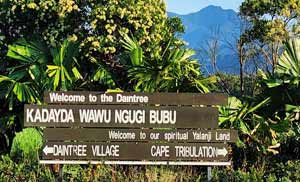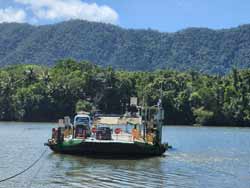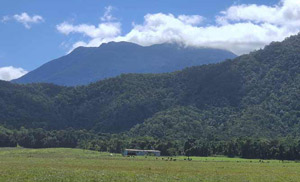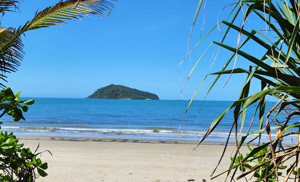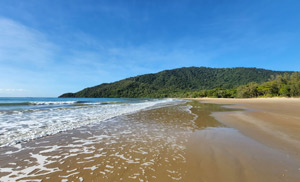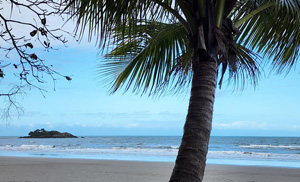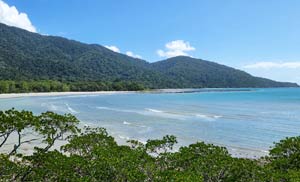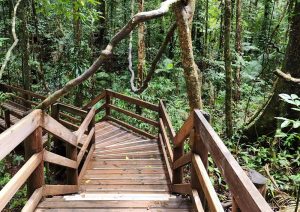There is no other bird quite like a cassowary, with their brightly coloured heads, human adult size height, menacing looking casque (helmet) and large razor-sharp claws! It’s no wonder they’re often called the world’s most dangerous bird.
And whilst they may not fly and you should never get too close, cassowaries are actually quite an amazing bird. Let’s take a look at some of the reasons why…
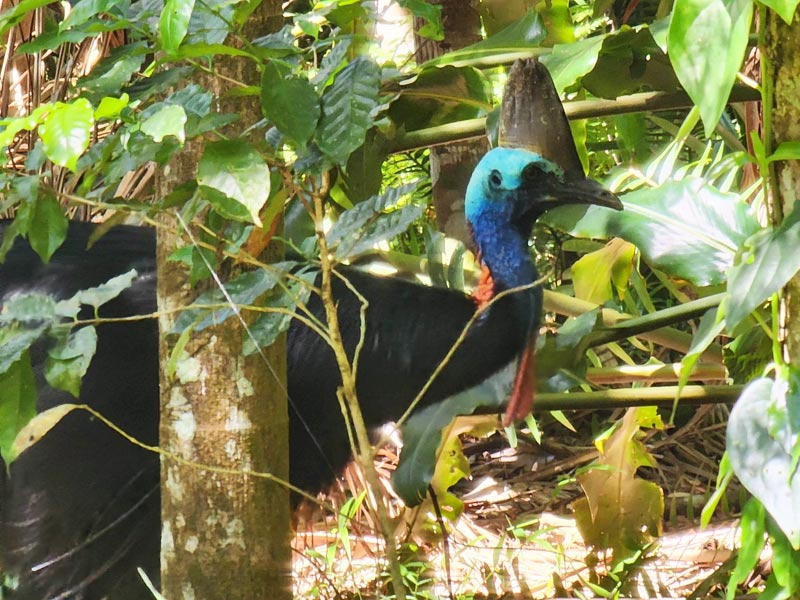
Cassowary Facts
The name Cassowary is derived from the Papua New Guinea word “Kasu” meaning horned and “weri” meaning head which refers to the horn-like casque on the bird’s head.
The Southern Cassowary (Casuarius casuarius johnsonii), also known as the double-wattled cassowary, is only found in the tropical rainforests of north-east Queensland, Papua New Guinea and some surrounding islands.
In Australia, the Daintree Rainforest is one of the areas they call home.
There are also two other living species of cassowary – the golden-necked northern cassowary (Casuarius unappendiculatus) found in New Guinea and the the dwarf or Bennett’s cassowary (Casuarius bennetti) which is the smallest of the three species of cassowaries.
Southern Cassowaries are part of the diverse group of the ratite family which also includes emus, ostriches, rheas and kiwis.
DeScended from dinosaurs
While all birds are descended from dinosaurs, the mysterious cassowary is thought to be more similar to ancient dinosaurs than most other birds.
With their large bodies and fierce claws, these flightless birds also have casques, a helmet-like structure atop the head, which many dinosaurs are believed to have had.
As they cannot fly away from a fight, cassowaries have adapted to use their casque and claw to protect themselves and stand their ground.
In a fight they will stand as tall as possible, ruffle their feathers and hiss, and lower their head to show off their casque before attacking.
Despite their reputation as being the world’s most dangerous bird, they are not known to attack without reason. They are quite shy natured and would much rather avoid confrontation, however they are very territorial and defensive of their young.
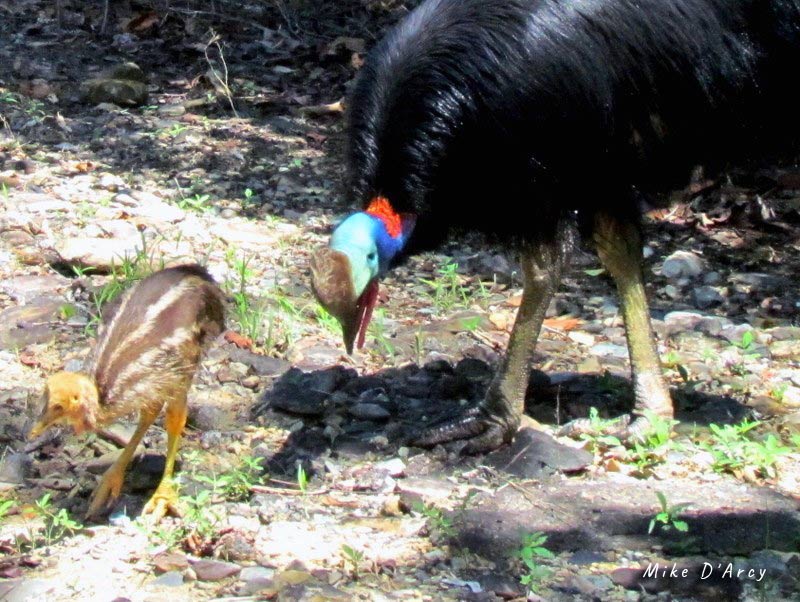
How big are Southern Cassowaries?
Southern cassowaries are the largest native vertebrate in Australian rainforests.
They are the third tallest bird in the world, with ostriches the tallest, followed by the emu.
The height of an adult southern cassowary is normally 1.5m to 1.8m (4.9–5.9 ft) with females being taller than males.
They are the second heaviest bird in the world to the ostrich. Females can weight up to 76kg (with an average 58.5 kg or 129 lb), while males can weigh up to 55kg (with an average 29 to 34 kg or 64–75 lb).
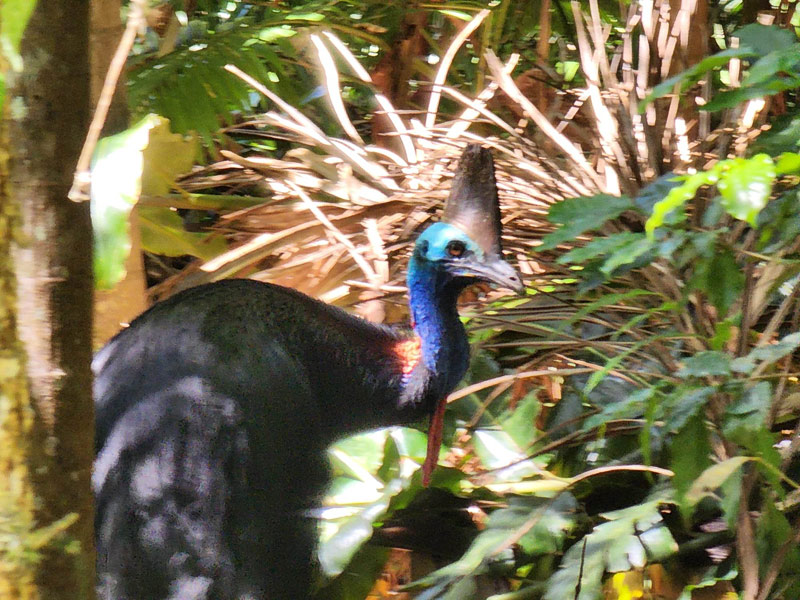
Unique helmets
Just like human fingerprints, the cassowary’s distinctive casque (helmet) is unique to each individual which helps them to be identified. They can continue to grow, often curling to one side as the birds age.
The purpose of their helmets is still debated, however recent research suggests it may help cassowaries to feel the low vibrating sound made by other cassowaries over long distances. This amazing sense, called infrasound, was also used by some dinosaurs and a few modern animals including elephants.
Other research from La Trobe University reveals the helmet may help to keep the birds cool during the hot tropical summers of northern Australia.
You might be suprised to find out their helmet is actually quite spongy, with a honeycombed structure inside.

Birds of a feather
The black satin-like plumage across their backs has a thick, almost fur-like appearance due to their double-shafted feathers.
Their wing stubs have a small number of modified quills which curve around the body.
The skin on their next and face is brightly coloured blues and red. They have two wattles, a sagging, jiggling, colourful piece of red skin below the chin on the front of the neck – hence the name double-wattled cassowary.

The Cassowary Diet
Cassowaries mostly feast on rainforest fruits, snails and fungi, however occasionally feed on small mammals, birds and reptiles, dead or alive.
They use their feet to scour the forest floor for a meal and can jump up to 7 feet to pick fruit off tree branches.
Cassowaries do not have a tongue so they manipulate their food in their beak by tossing it about, often swallowing fruit in full down their long throats.
In order to drink, they scoop up the water with their lower bill.
A number of rainforest trees such as the Cassowary Plum rely on cassowaries for propagation – the undigested seeds and berries are released in their large piles of droppings, allowing the seeds to grow into new plants.
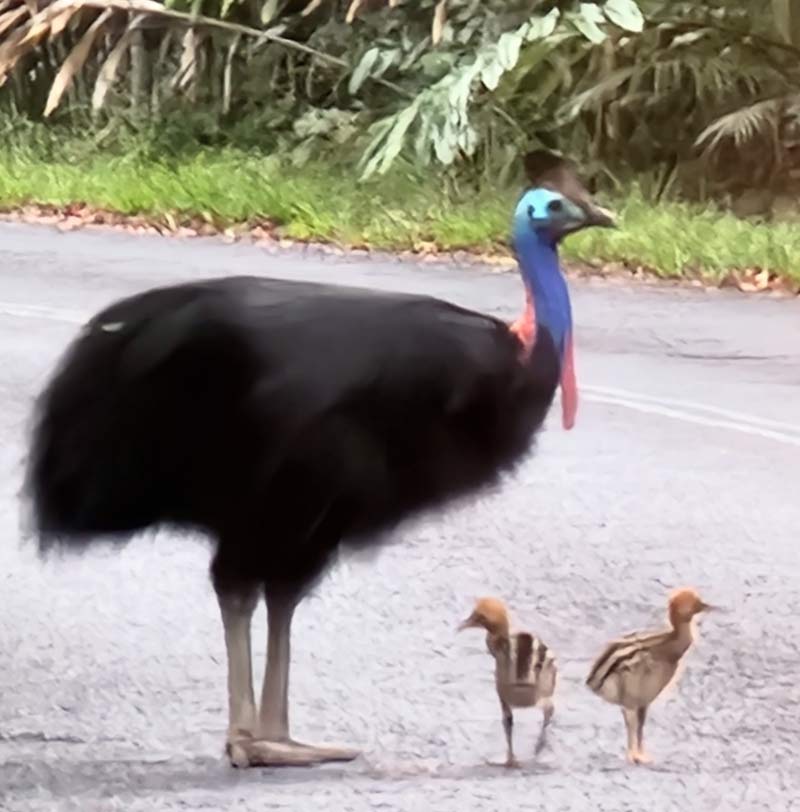
Cassowary Parenting
Southern cassowaries lay three to five bright green-coloured eggs.
The male cassowary guards and incubates the eggs for approx. 50 days, and continues to guard the chicks after they’ve hatched for about nine months to protect them from predators and teach them to forage.
By the time the young are independent, they are nearly full-grown and able to defend themselves.
Newly-hatched chicks are striped dark brown and creamy white. After three to six months the stripes fade and the plumage changes to brown. As the young mature, the plumage darkens, the wattles and casque (helmet) develop and the skin colour on the neck and wattles brighten.
Cassowaries reach maturity at about three years of age.
Be Casso-wary!!
When driving through the Daintree Coast or wandering the Daintree Rainforest, keep an eye out for cassowaries.
Never approach cassowaries and keep a safe distance.
Do not feed cassowaries as this can affect their health and may make them aggressive. Always discard food scraps in closed bins.
Keep dogs restrained on a leash.
If you encounter a southern cassowary, back away slowly and put something like a tree or a backpack between yourself and the bird, and let it go on its way.
To report cassowary sightings and incidents phone: 1300 130 372
Looking for more information on the Daintree Coast – Daintree Ferry to Cape Tribulation? View our guide to the Daintree Rainforest and browse our directory for places to eat, Daintree rainforest accommodation and things to do in the Daintree rainforest to help plan your visit to the Daintree Coast.
References: qld.gov.au, wikipedia.org, discoverwildlife.com, daintreecassowary.org.au
